Last updated on May 4th, 2025
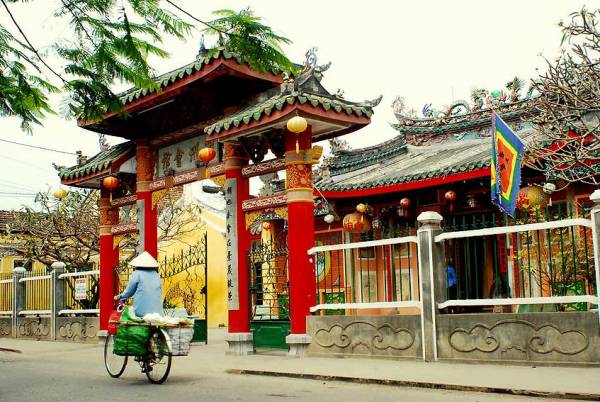
ZhaoZhao Assembly Hall, © Tinnakorn Nukul – Fotolia.com
Visit Hoi An – Ancient Town
Tran Phu Street in Hoi An Ancient Town is the place to go to see everything when you visit Hoi An. The main attractions in Hoi An Ancient Town are the Japanese Covered Bridge, the assembly halls, Chua Ong Pagoda and the night market. Rent a bike for a few dollars a day and see the sights of Hoi An’s Ancient Town.
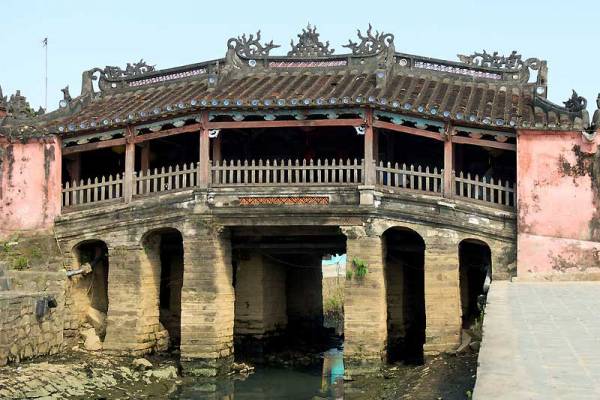
Japanese Covered Bridge, © Can Stock / dibrova
Visit Hoi An – Japanese Covered Bridge
The Japanese Covered Bridge is a World Heritage Site. The bridge was built at the turn of the 17th century. The Japanese Covered Bridge has become a symbol of Hoi An just like its lanterns. Other names for the Japanese Covered Bridge are Chua Cau or the Cau Pagoda. Don’t confuse it with the less elaborate and much more recently built Japanese Bridge outside of Hue. The Japanese Covered Bridge of Hoi An is at the western end of Tran Phu Street, right beside the Cantonese Assembly Hall.
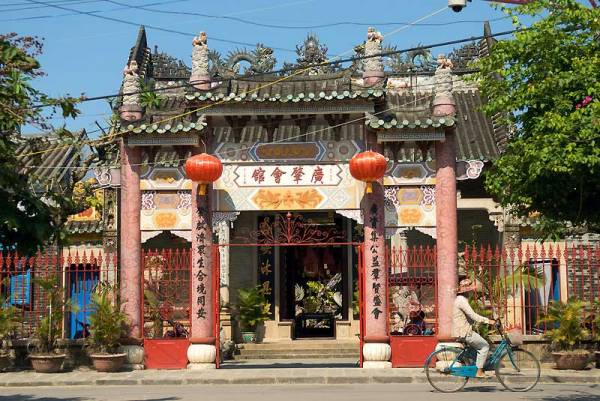
Cantonese Assembly Hall, © Can Stock / dibrova
Visit Hoi An – Chua Ong Pagoda
Chua Ong Pagoda is at 24 Tran Phu Steert. The Chua Ong Pagoda is also called the Ong Pagoda, the Quan Cong Pagoda and the Guan Yu Pagoda. The pagoda is dedicated to Quan Thanh De Quan. The Hoi An Historical and Cultural Museum is located beside the Ong Pagoda in another pagoda referred to as the Quan Am Pagoda.
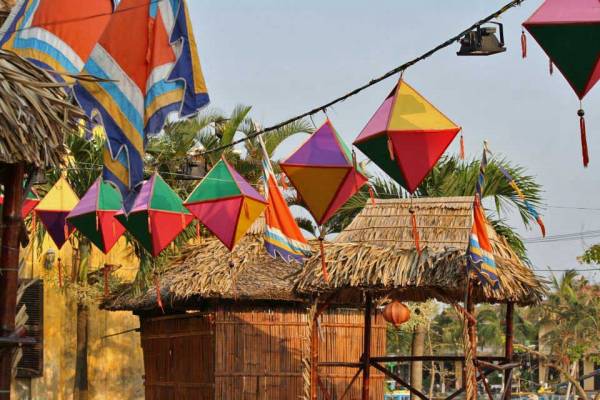
Lanterns, Hoi An
Visit Hoi An – Assembly Halls
There are five assembly halls along Tran Phu Street near the Thu Bon River. Each assembly hall sells its own tickets. Visit the Japanese Covered Bridge and the Ong Pagoda on Tran Phu Street at the same time
Fujian Assembly Hall at 46 Tran Phu Street is the largest and most famous assembly hall. Another name for the Fujian Assembly Hall is Phuc Kien.
Zhao Zhao Assembly Hall – at 157 Nguyen Duy Hieu Street and Tran Phu Street. Zhao Zhao is also known as Ghaozhou, Chaozhou, Trieu Chau, Bon Dau Quan, Ong Bon Pagoda and Am Ban Pagoda.
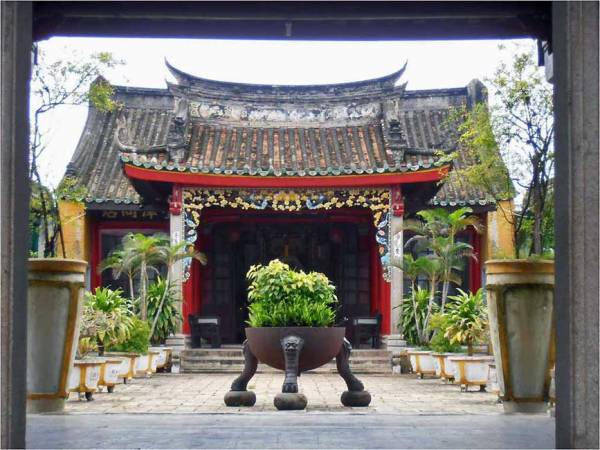
Chinese Assembly Hall
Hainan Assembly Hall at 10 Tran Phu Street is dedicated to 108 merchants executed as pirates. Other names for the Hainan Assembly Hall are the Zhaoying and Hai Nam.
Cantonese Assembly Hall or Quang Trieu – 176 Tran Phu Street right beside the Japanese Covered Bridge.
Chinese Assembly Hall at 64 Tran Phu Street. The Chinese Assembly Hall is also known as Trung Hao, Duong Thuong, Ngu Bang Hoi Quan, Chua Ba and the Goddess Temple.
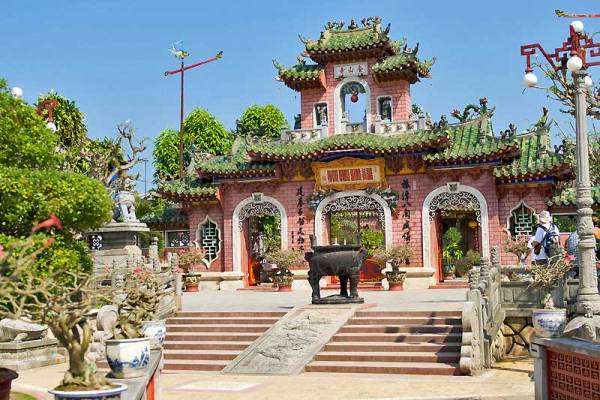
Fujian Assembly Hall, © Can Stock / dibrova
Visit Hoi An – More Sights
- Walk across the Cam Nam Bridge
- The Old House of Tan Ky
- Tran Family Home & Chapel
- Chuc Thanh Pagoda, Phac Hat Pagoda and Phuoc Lam Pagoda
- Kim Bong Village on Cam Kim Island is a few minutes by boat from the Ancient Town
- Tra Que Vegetable Village and Thanh Ha Pottery Village
- Sa Huynh Culture Museum
- Dinner cruise on the Thu Bon River
- Buy tailor made clothes to order.
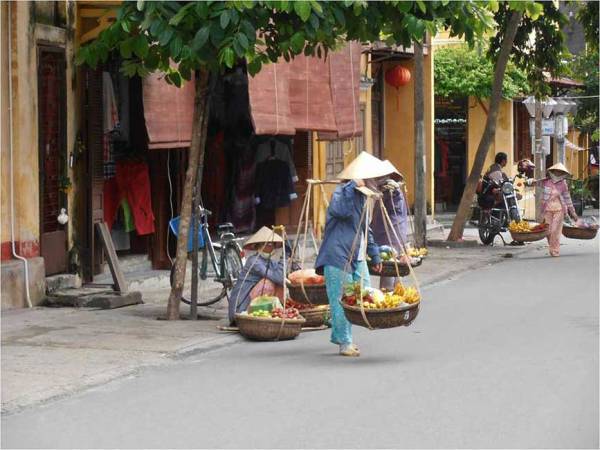
Hoi An Ancient Town
Things to see and do Near Hoi An
- Visit Cua Dai Beach or An Bang Beach at the coast and Cham Island off shore.
- Travel north about 20 miles to Danang to visit the Museum of Cham Sculpture, China Beach (My Khe), the Marble Mountain or Thuy Son caves. China Beach was formerly a recreation area for US soldiers. You can also take a boat back to Hoi An.
- My Son, a World Heritage Site about 4 hours by bus from Hoi An. The My Son World Heritage Site is sometimes referred to as the Angkor Wat of Vietnam.
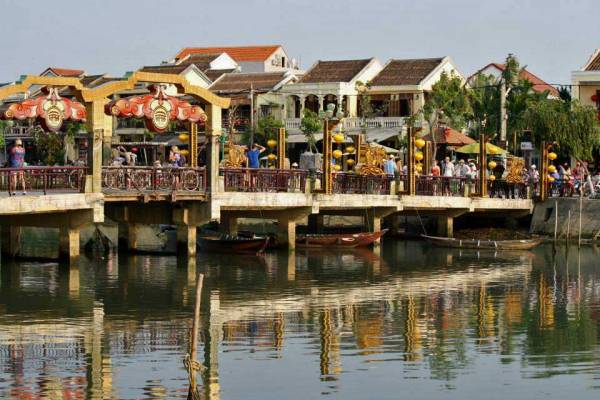
Cam Nam Bridge
Visit Hoi An – Hotels
- Grandvrio Ocean Resort Danang
- Sunrise Premium Resort Hoi An
- Hotel Royal Hoi An – MGallery by Sofitel
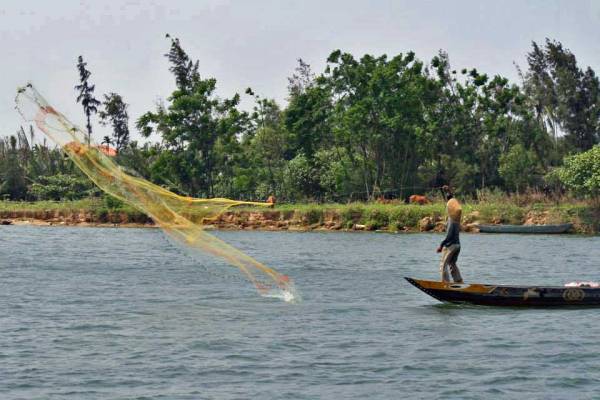
Fishing near Hoi An
Get to Hoi An
The nearest international airport you can use to get to Hoi An is Da Nang International, which is about 45 minutes from town The Vietnam Railway’s Reunification “Express” Train does not pass through Hoi An. Travelers touring the country by rail will need to arrange taxis or group vans from Da Nang to visit Hoi An.
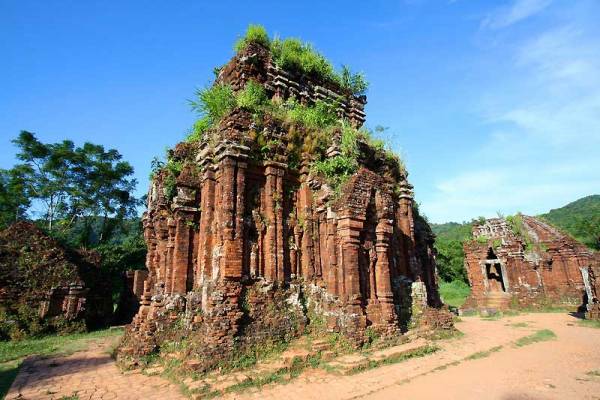
My Son Ruins, © Can Stock / jvdwolf
Hoi An Weather
Hoi An weather is rainy and hot in the summer months from June – August. Expect average highs of 94 F (34 C) and average lows of 78 F (26 C). The coldest months are January and February, with average highs of 77 F (25 C) and average lows of 66 F (19 C). Temperatures are more comfortable in this period, which also makes it the height of the tourist season.
The monsoon season peaks from September – November. October can reach monthly precipitation levels of 24 inches (600 mm). April gets our vote as the best time of year to visit Hoi An because it’s the middle of the dry season and temperatures are pleasant.
Visit Hoi An – Background
The Champa settled Hoi An in the second century. The city was a major silk producer through the 19th century. Hoi An is a World Heritage Site and is now famous for its lanterns. Flooding is common in the rainy season from September until January. Homes often have pulley systems to lift furniture above the flood line.
You will find the assembly halls and some of the major pagodas in the Hoi An Ancient Town. You can easily be confused by the variety of spellings for place names, because there are so many variations for the same places. A good source of information is Asian Historical Architecture.


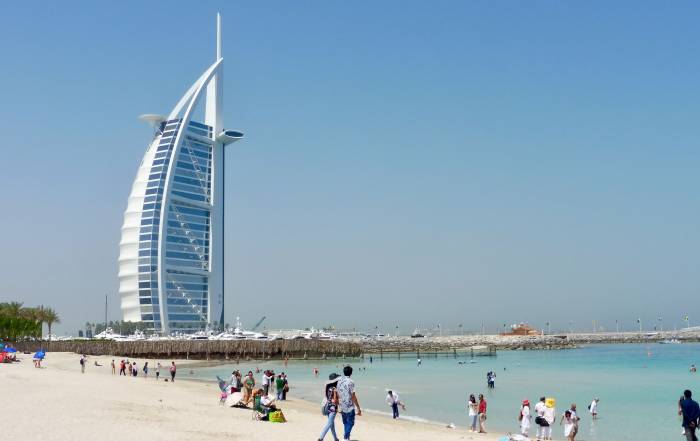

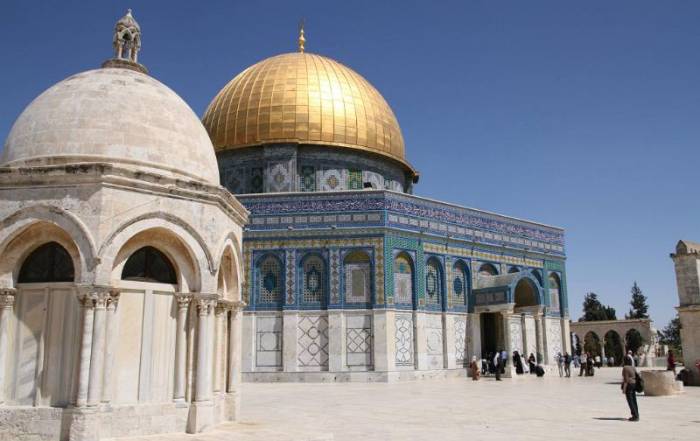
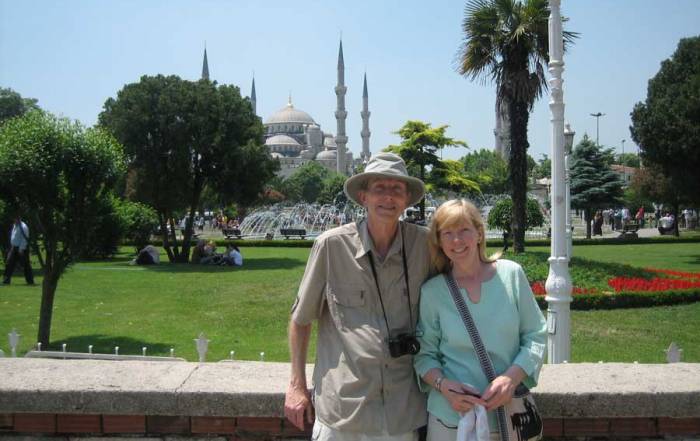
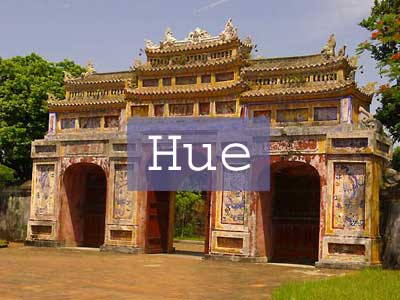
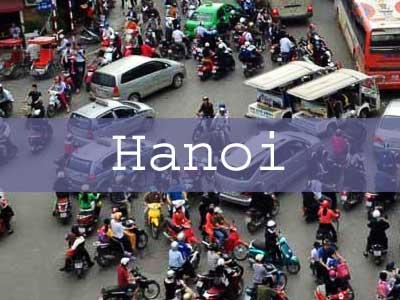
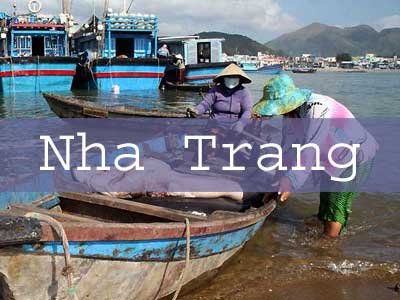
Leave A Comment